As electricity demand rises and renewable integration intensifies, the global energy system faces a defining challenge: building a resilient energy grid that can operate under stress without compromising reliability.
Extreme weather events, cyber risks, and surging digital-infrastructure loads are testing the limits of legacy grids. To adapt, utilities and policymakers are rethinking design principles – focusing on decentralization, digital control, and intelligent storage solutions that provide both flexibility and stability.
Decentralization of Future Grid Resilience
Centralized energy production is giving way to a distributed model. Microgrids, rooftop solar, and community-level assets now form a network of connected generation points that make systems less vulnerable to single failures.
According to the European Commission’s Smart Grids initiative, distributed infrastructure improves efficiency and resilience while giving consumers greater control over their energy supply. The Baltic grid synchronization project – linking Baltic states to Continental Europe – illustrates how regional integration and decentralization can enhance security and balance fluctuating renewable output.
Digitalization: The Smart Grid Backbone
The modern grid depends on digital systems that provide real-time visibility and predictive management. Utilities are deploying smart grid technology – combining sensors, AI-driven forecasting, and digital twins – to anticipate equipment failure and optimize power flows.
The International Energy Agency (IEA) reports that digital infrastructure now accounts for over 15% of total grid investment worldwide, reflecting its role as a core operational layer.
Back in 2023, Christoph Frei of Emerald Technology Ventures outlined this shift at Energy Tech Summit, describing digitalization as the foundation for grid intelligence. Two years later, utilities across Europe are running large-scale digital-twin programs and predictive-maintenance systems once considered experimental. This evolution demonstrates how early ideas are being translated into practical engineering.

Christoph Frei, Partner, Emerald Technology Ventures AG at Energy Tech Summit 2023
Decarbonization: Integrating Renewables Without Compromise
Renewables are reshaping grid operation. The IEA Renewables 2024 report projects renewable generation to reach 42% of global electricity by 2030. Yet integration remains a technical challenge: fluctuating solar and wind output must align with stable demand.
Hybrid systems combining generation with energy storage for grid stability are closing that gap. In Spain, grid-scale battery hubs now provide multi-hour balancing for solar peaks, while the UK’s wind-plus-storage clusters supply reserve capacity for system reliability. These projects prove that renewable integration in grid planning can maintain both sustainability and performance.
Communication Infrastructure: Strengthening the Grid’s Nerve System
A resilient grid depends on fast, secure communication. Dr Peter Sobotka of Corinex has long stressed that modern energy systems are as much information networks as electrical ones.
Advanced communication layers enable operators to coordinate distributed assets, detect faults instantly, and maintain system integrity during high demand or cyber incidents. The European Union’s current smart-meter rollout aims to connect over 200 million meters by 2030, providing the data foundation for future grid resilience.

The seven key building blocks shaping the resilient energy grid of the future.
Flexibility: Balancing a Dynamic Energy Landscape
Flexibility converts volatility into stability. Automated demand-response programs, dynamic pricing, and distributed storage give operators tools to balance the grid in real time.
According to McKinsey & Company, flexible systems could reduce renewable curtailment by up to 30%. Utilities are adopting integrated control platforms to dispatch aggregated home batteries, EV chargers, and industrial loads – creating a more adaptive operating model for the resilient energy grid.
Regulation: The Hidden Lever of Innovation
Technology evolves quickly; policy often does not. Updating market design, metering standards, and data-sharing frameworks is critical to accelerate modernization.
The World Bank’s RISE framework shows that countries with adaptive regulation attract significantly more private investment in grid infrastructure. Regulators in markets such as the Netherlands and Denmark are already piloting flexibility markets that reward storage and balancing services – practical steps toward future grid resilience supported by clear economic signals.
Building the Grid of the Future
Progress depends on coordination across sectors. Utilities, technology developers, and investors must align technical standards and project financing to deploy solutions at scale.
At Energy Tech Summit 2023, Dr Peter Sobotka described collaboration as “the single biggest enabler of resilience.” That principle now defines many cross-border initiatives: shared data platforms for grid monitoring, joint pilot projects for digital twins, and multi-utility alliances advancing AI-based forecasting.
The Energy Tech Summit community continues to foster these partnerships through its curated networking formats, connecting innovative technologies with capital and policy support.
Founders working on grid innovation can also apply to Energy Tech Challengers – the global startup competition spotlighting breakthrough solutions in storage, digitalization, and grid modernization.
What’s Next for the Resilient Energy Grid
The 7th edition of Energy Tech Summit 2026 – April 15–16, Bilbao, Spain – will explore how AI, long-duration storage, and advanced system planning can reinforce resilience. Sessions will address practical implementation: digital-twin deployment, regulatory coordination, and financing for large-scale upgrades.
🎟️ Buy your ticket to join more than 1,500 leaders defining the future of global energy infrastructure.
FAQ: Building a Resilient Energy Grid
Which technologies support future grid resilience?
Distributed generation, smart grid technology, storage, and communication systems that enable real-time coordination.
Why is renewable integration critical for reliability?
Renewable integration in grid operations, supported by energy storage for grid stability, ensures consistent supply as clean-energy capacity expands.
What role does policy play in grid resilience?
Adaptive regulation and transparent data frameworks unlock private investment and accelerate deployment of innovative infrastructure.
Where can I learn more?
Visit the Energy Tech Summit 2026 in Bilbao to see how industry leaders are implementing these solutions.


